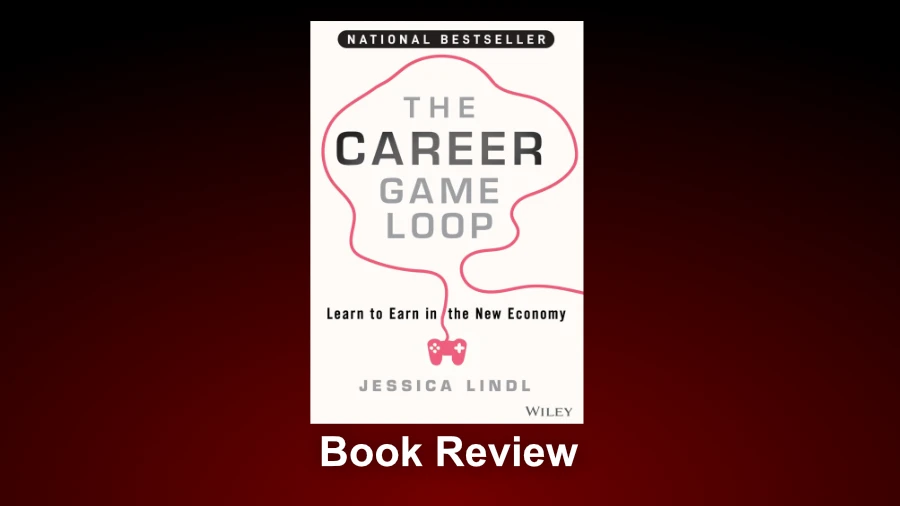
· 5 min read
The Career Game Loop Book Review
Careers are harder than ever to navigate, and Jessica Lindl's book offers a fresh perspective on how to approach them.
The Career Game Loop by Jessica Lindl is a book that resonated with me precisely where I needed it, prompting me to pause and reflect on my career so far, and helping me recognize that my journey is far from over.
Disclosure: I received this book. However, I chose to write this review because the content resonated with me in a way that I think others will benefit from.
Whilst you may think the book is primarily aimed at those with a gamer background, you would be wrong. The fundamental idea, regardless of background, is to view career progression and improvement as a challenge to be met with the approach of playing a game and enjoying the journey.
“Don’t think that you’re going to follow a course of study, and then do that thing forever. That hasn’t existed since the seventies.”
The loop repeats the pattern to progress and reach your goals continually.
Essentially, our careers unfold in this manner.
- Choose a profession we think we want to pursue
- Train for that profession
- Look for a role to implement our skills and interests
- Repeat as many times as you want for reasons that make sense to you
It used to be that we would likely have only a couple of big career moves; that is no longer the pattern today, especially in the tech industry.
Using myself as an example, I started work back in the 1980s (do you remember that far back?), and I have worked through the following fields.
- Photographer
- Digital artist
- Web developer
- App developer
- Software engineering manager
Each field I pursued matched my interests. I still practice all of the above today, with only numbers four and five being my day job.
As I read through the chapters in the book, I identified myself in each part of the loop for each of my career moves. It also helps that I have been a gamer my entire life and could translate the approaches recommended in the book to changing professions.
The book offers numerous excellent examples to learn from. Most of them are folks from the gaming industry, but not all. At times, it does dwell a little too much on people’s back story before circling back to the loop analysis.
Consider these stories as a means to understand that others have navigated this process and achieved success by recognizing their strengths, adapting to their circumstances, and defining a path forward.
For me, this is a key message from the book.
There is always a path forward for each of us, but we have to choose to take it,
You can always find support from folks around you, but you are the driver of your destiny, and only you can ignite the fireworks.
Jessica underlines these messages with insights from her career path. An interesting story worth reading.
Sometimes it can be hard to expose our own experiences for the benefit of helping others, and I thank Jessica for putting them out there. This is made all the more interesting by her connection to the Unity engine, which I have personally used for a long time to prototype apps and game development.
The idea of job crafting
There is a series of stories on the topic of job crafting, with a compelling real-world introduction through the experiences of Hidetaka Miyazaki. He noticed a failing project and offered to take it over. This gave him the space to grow and work on something with a low level of expectation.
Although the result was not a smash hit, but rather a flop, he learned from the experience and never gave up.
I have heard from people who start out making a game or an app and are greatly disappointed when it doesn’t become an overnight sensation. I always mentor them to expect the first few to be more of a checkpoint on the path to success rather than starting with a home run (I’m still there, by the way).
As the book says
“Embracing these failures is the most challenging, most important mindset move we can make”
If the position you want does not exist, consider creating it. That may or may not be at your current place of employment. The key is knowing what you want it to be and then finding the steps to make it happen.
In chapter 18, “Why Gamers Job Craft,” this is explored further with a deep dive, including learning on the job, a factor that I believe applies to us all, regardless of trade. There is a touching story of a cleaner who rearranged the artwork on the walls of comatose patients as a way to try and give the patients a sense of variety and personal importance, while providing the cleaner satisfaction in knowing they made a difference in people’s lives.
This is certainly not in the job requirement, yet the cleaner took it upon themselves to craft that for both themselves and the patient.
Conclusion
I recommend this book to everyone, regardless of your current status. Whether you are looking to start a career, move on, or wonder why you are frustrated with your current position and need to understand what the problem might be, this is the book for you.
As I read through the information, I identified myself and the times in my career when I have been stuck in various parts of the loop.
I am actually on my second read-through, as I know some gems did not sink in as much as they should have on the first read.
Forget the so-called quick fixes that you see people posting on social platforms, or expensive courses that usually end up telling you what you already know.
Please read this book and start by identifying yourself and where you want to go. Make a plan and begin shaping your career into what you want it to be.
Enjoy the journey!

